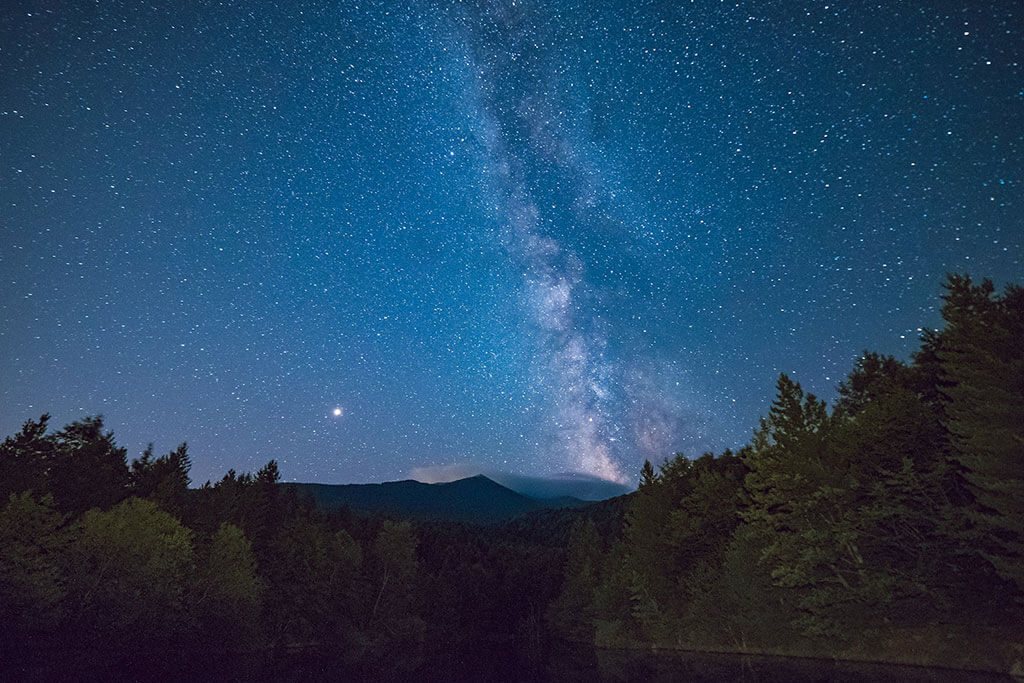
5
July
Solar Observing
Join us at the Ontario Science Centre for our monthly Solar Observing on the TelusScape observing pad. This is the area in front of the Science Centre's entrance. We use specialized telescopes that are safe to aim at the Sun. Check our home page on the Friday prior for go/no-go calls as this event is weather dependent.

27
June
New Moon
The moon is between us and the sun. Without the moon in the sky at night, deep sky objects are easier to observe.

26
June
New moon in June Algonquin Star Party
This star party is a Toronto Centre event and a chance to get an early start on the camping season under the pristine dark skies that Algonquin Park is famous for.
We have no agenda, guest speakers or activities planned except for observing on the beach. We do hope to have a communal campfire each evening for everyone to enjoy.
Making your reservation is easy. Just call the Ontario Parks Reservation line at 1-888-668-7275 or visit their website at www.OntarioParks.com.

25
June
General Assembly Victoria, BC
See: http://victoria.rasc.ca/2014GA/Default.htm

23
June
Dark Sky Star Party
See the milky way and galaxies with the unaided eye. Point your telescope to find the many dim deep space objects that sprinkle the sky. Away from Toronto's light pollution, there is so much to see. We observe from the Long Sault Conservation area, an hour outside of Toronto. We meet around dusk once a month in the parking lot for views only seen in dark sky conditions. We hold this event on the first clear night of our week-long window, so the date and time are determined closer to.

21
June
DDO Family Night
Family Nights are a great introduction to the night sky for our younger guests. Look through telescopes, make some space crafts, visit the Skylab and find out what's really up there!
Family Nights require tickets to be purchased in advance. This program runs regardless of sky or weather conditions. If skies are clear you can check out the night sky through a variety of telescopes including the biggest optical telescope in Canada! The evening also includes a presentation in our new Skylab that offers great (virtual) night sky viewing.

21
June
Summer Solstice
The longest day, the shortest night.

17
June
Globe at Night
Measuring light pollution of your sky, See: www.globeatnight.org

14
June
DDO Family Night
Family Nights are a great introduction to the night sky for our younger guests. Look through telescopes, make some space crafts, visit the Skylab and find out what's really up there!
Family Nights require tickets to be purchased in advance. This program runs regardless of sky or weather conditions. If skies are clear you can check out the night sky through a variety of telescopes including the biggest optical telescope in Canada! The evening also includes a presentation in our new Skylab that offers great (virtual) night sky viewing.

9
June
City Star Party
Hover above the moon like an astronaut and get eye-to-eye with the planets. Find colourful stars, star clusters, bright nebulae and even another galaxy. Our monthly City Star Party is the place to catch universe from within the city limits at Bayview Village Park. If you don't have a telescope then you will find many astronomers who would love to share a view. If you are thinking of buying a telescope, viewing with other people's equipment is the best way to make a good choice. If you have a telescope or binoculars, please bring it!

7
June
Awards Picnic 2014
The Annual Awards Picnic.
Who can attend: members and their familyFee: freeReservation requiredLocation: David Dunlap Observatory (DDO)

7
June
Solar Observing
Join us at the Ontario Science Centre for our monthly Solar Observing on the TelusScape observing pad. This is the area in front of the Science Centre's entrance. We use specialized telescopes that are safe to aim at the Sun. Check our home page on the Friday prior for go/no-go calls as this event is weather dependent.
